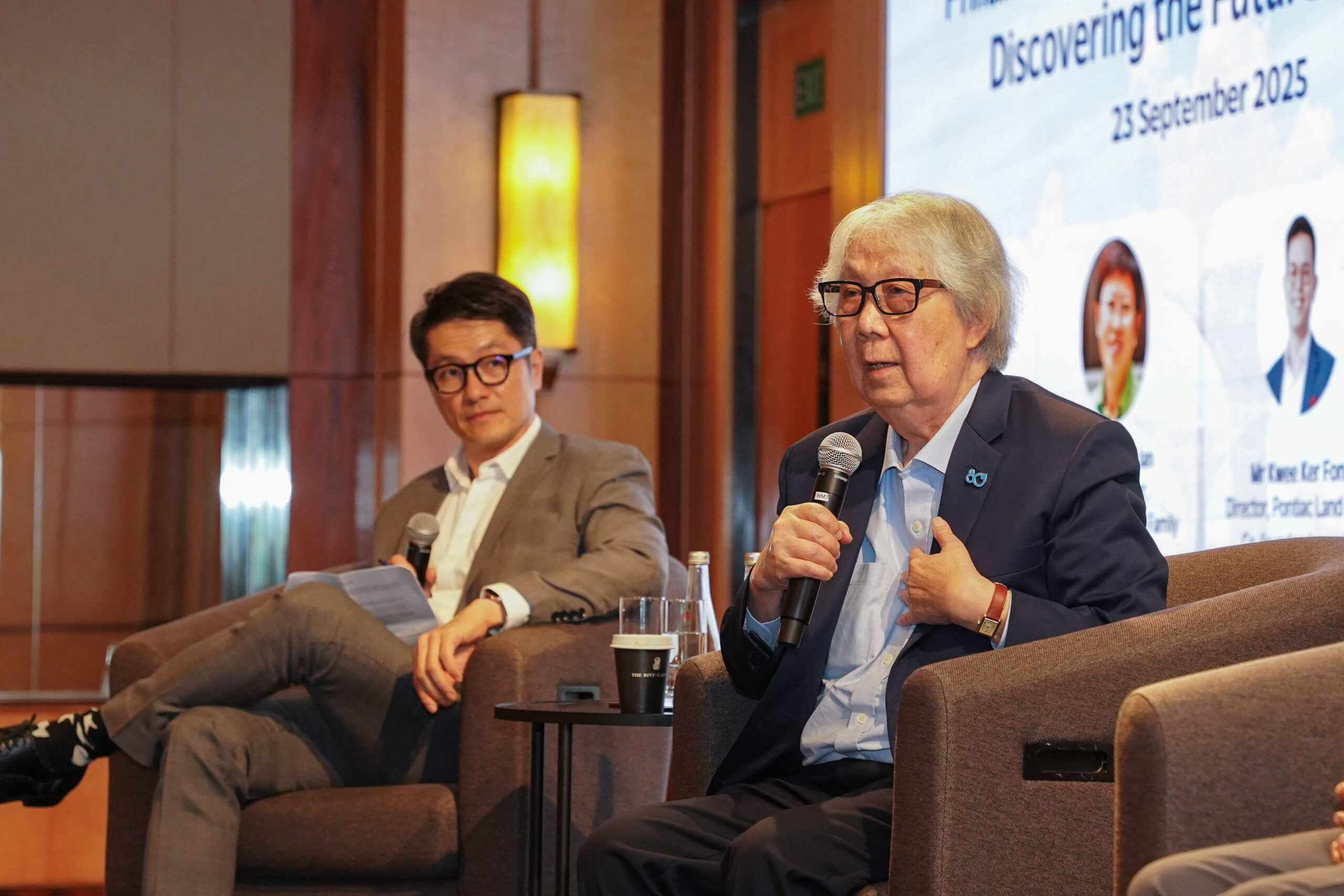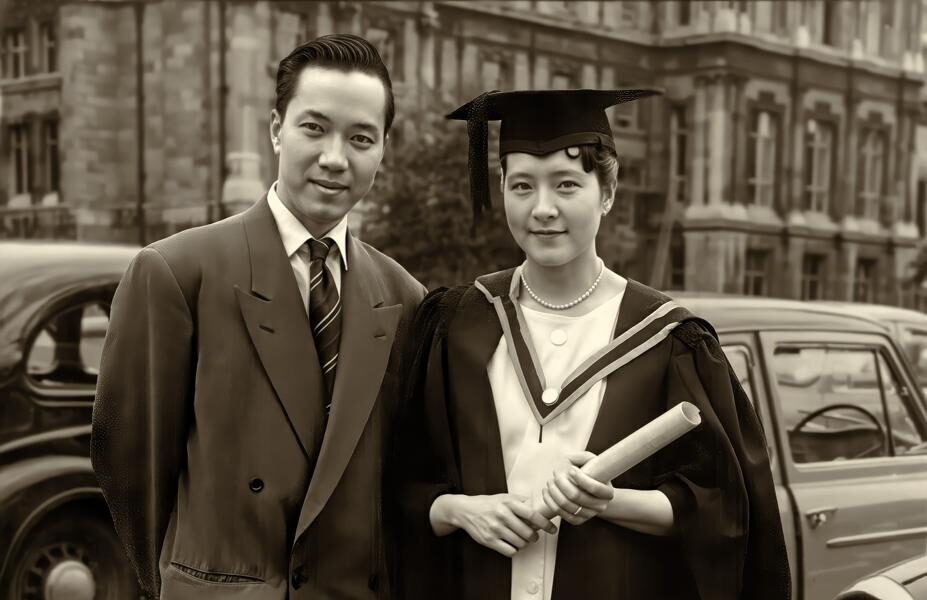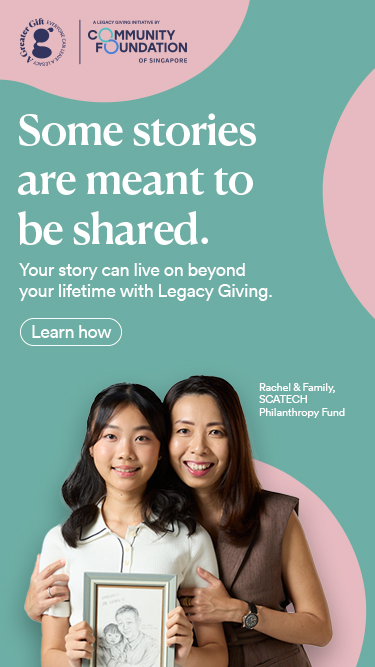#MyGivingJourney X Jeya Ayadurai: Bringing her people and strategic skills to nonprofits


CFS is proud to launch our #MyGivingJourney series, which portrays extraordinary women and their efforts in philanthropy as part of celebrating the women of Singapore in the year 2021. Our first story features Jeya Ayadurai, AWWA Board Director & member of CFS’s Finance & HR Committee.
Giving back is more than just about money, says Jeya Ayadurai. “You can use your skills, you can do some mentoring or you can just spend time reading to kids in a school,” she says. Having blazed a trail in the civil service and corporate world helping organisations and people thrive, Jeya is doing just that – sharing her knowledge, experience and ideas with nonprofits.
Social service organisations are very good at caring for people, she notes. “But heart and hands have also to be guided by the head. You have to look at developing your talent. You need to strengthen your organisation structures and practices to reach out to even more clients. You need to measure performance and ensure that your leaders are aligned with the company’s strategy,” says Jeya, who has a wealth of experience in senior roles in regional human resources (HR) and strategic change management. As she sees it, welfare organisations have more balls in the air to juggle compared to profit-driven entities.
The pandemic has thrown even more balls into the mix. COVID-19 has upended how charities raise funds and interact with beneficiaries and volunteers. “With physical contact limited and connections moving online, how do you create stickiness with your donors, staff and volunteers? We need new ways of managing and engaging with them,” she notes.
Jeya sits on the board of AWWA Ltd, a registered charity that works to empower persons with disabilities, disadvantaged families and vulnerable seniors. She is also chairperson of AWWA’s HR committee. More recently, Jeya joined the Finance & Human Resources committee of the Community Foundation of Singapore (CFS).
Where she once worked with private sector CEOs to drive their people strategies and organisational development, she now works with the leadership of AWWA and CFS to develop performance metrics, appraisal structures, compensation packages and people management processes.
Jeya has volunteered with AWWA for 18 years and she is proud of how AWWA has helped strengthen the social services sector in Singapore. For Jeya, philanthropic work has made her a whole person. A career in the corporate world tends to be driven by bottom-line and measurable outcomes. In community work, when the head, heart and hands come together, clients are empowered to rise above their own limitations and achieve more holistic outcomes. Being humane brings happiness all around, she firmly believes.
Begin your own journey of giving with CFS. Read more about #MyGivingJourney series here.
This article was written by Sunita Sue Leng, a former financial analyst and journalist, who believes that the written word can be a force for good. She hopes to someday write something worth plagiarising.
CFS is proud to launch our #MyGivingJourney series, which portrays extraordinary women and their efforts in philanthropy as part of celebrating the women of Singapore in the year 2021. Our first story features Jeya Ayadurai, AWWA Board Director & member of CFS’s Finance & HR Committee.
Giving back is more than just about money, says Jeya Ayadurai. “You can use your skills, you can do some mentoring or you can just spend time reading to kids in a school,” she says. Having blazed a trail in the civil service and corporate world helping organisations and people thrive, Jeya is doing just that – sharing her knowledge, experience and ideas with nonprofits.
Social service organisations are very good at caring for people, she notes. “But heart and hands have also to be guided by the head. You have to look at developing your talent. You need to strengthen your organisation structures and practices to reach out to even more clients. You need to measure performance and ensure that your leaders are aligned with the company’s strategy,” says Jeya, who has a wealth of experience in senior roles in regional human resources (HR) and strategic change management. As she sees it, welfare organisations have more balls in the air to juggle compared to profit-driven entities.
The pandemic has thrown even more balls into the mix. COVID-19 has upended how charities raise funds and interact with beneficiaries and volunteers. “With physical contact limited and connections moving online, how do you create stickiness with your donors, staff and volunteers? We need new ways of managing and engaging with them,” she notes.
Jeya sits on the board of AWWA Ltd, a registered charity that works to empower persons with disabilities, disadvantaged families and vulnerable seniors. She is also chairperson of AWWA’s HR committee. More recently, Jeya joined the Finance & Human Resources committee of the Community Foundation of Singapore (CFS).
Where she once worked with private sector CEOs to drive their people strategies and organisational development, she now works with the leadership of AWWA and CFS to develop performance metrics, appraisal structures, compensation packages and people management processes.
Jeya has volunteered with AWWA for 18 years and she is proud of how AWWA has helped strengthen the social services sector in Singapore. For Jeya, philanthropic work has made her a whole person. A career in the corporate world tends to be driven by bottom-line and measurable outcomes. In community work, when the head, heart and hands come together, clients are empowered to rise above their own limitations and achieve more holistic outcomes. Being humane brings happiness all around, she firmly believes.
Begin your own journey of giving with CFS. Read more about #MyGivingJourney series here.
This article was written by Sunita Sue Leng, a former financial analyst and journalist, who believes that the written word can be a force for good. She hopes to someday write something worth plagiarising.
- Related Topics For You: #MYGIVINGJOURNEY, CHARITY STORIES, DONOR STORIES, STORIES OF IMPACT



